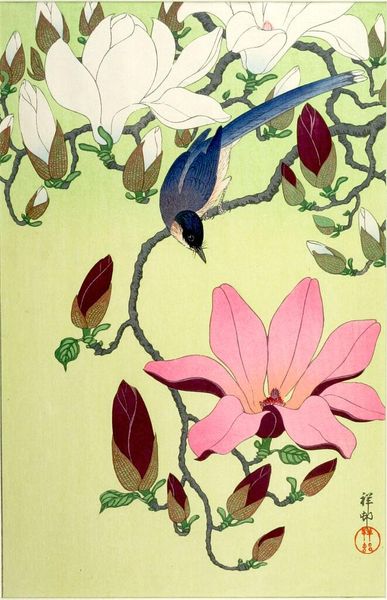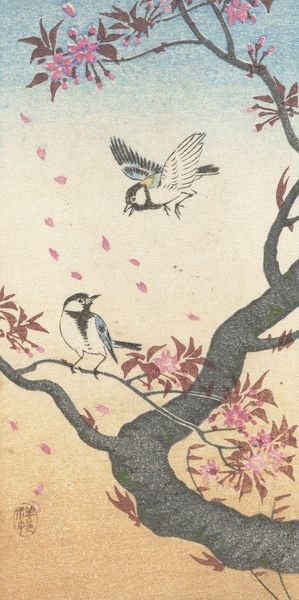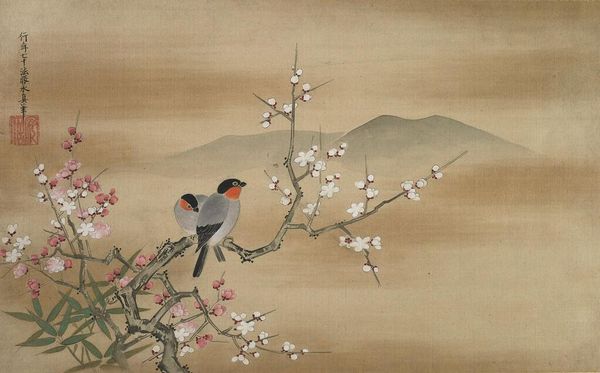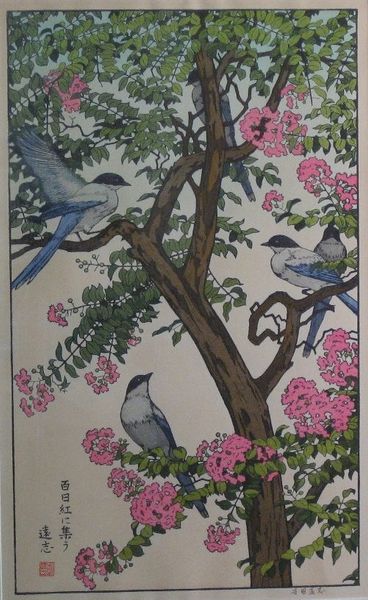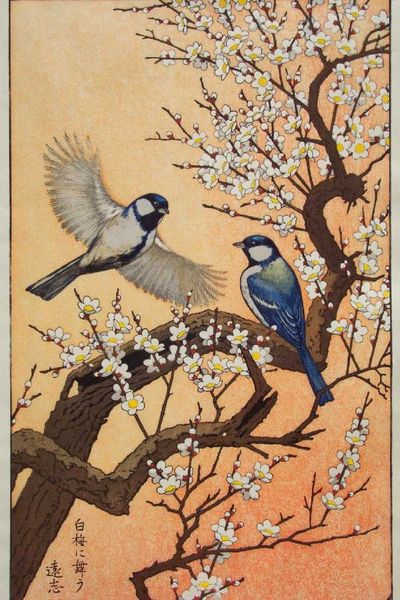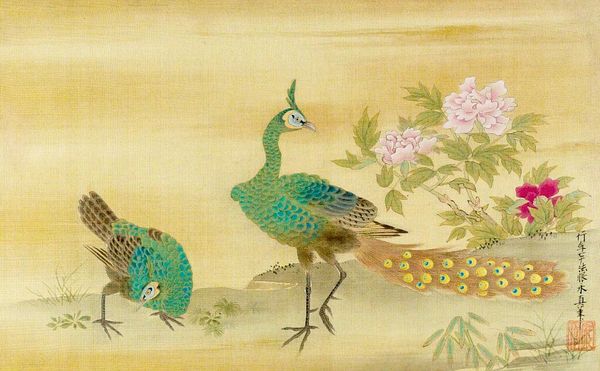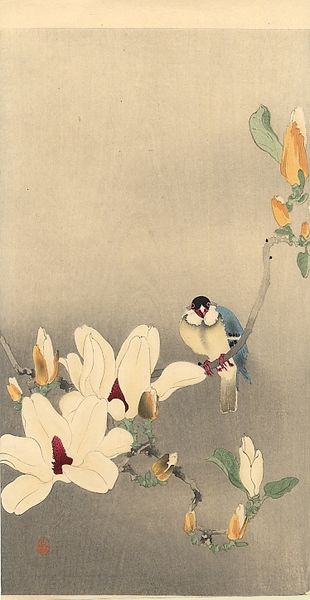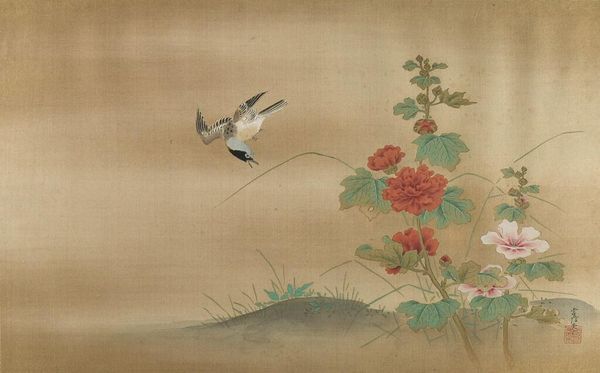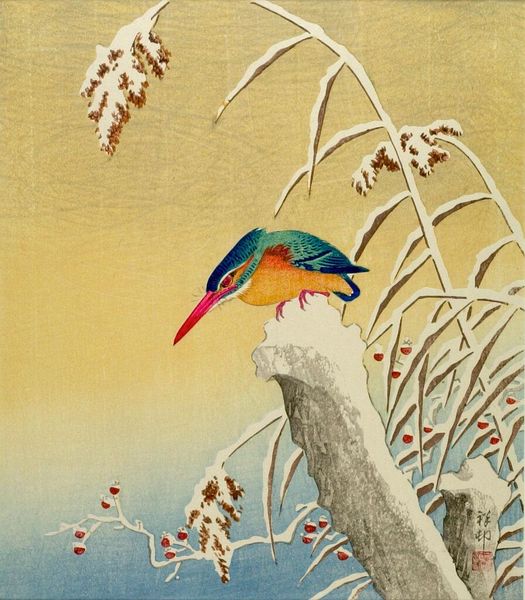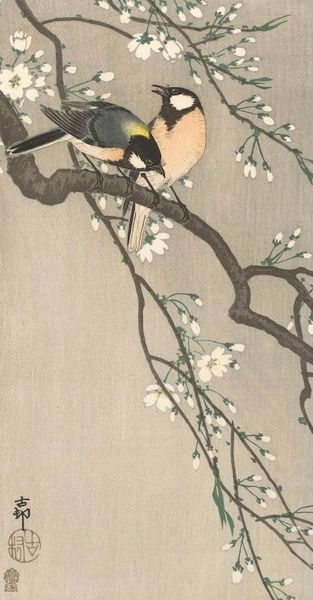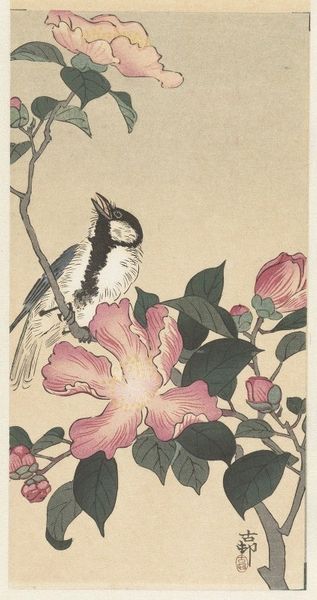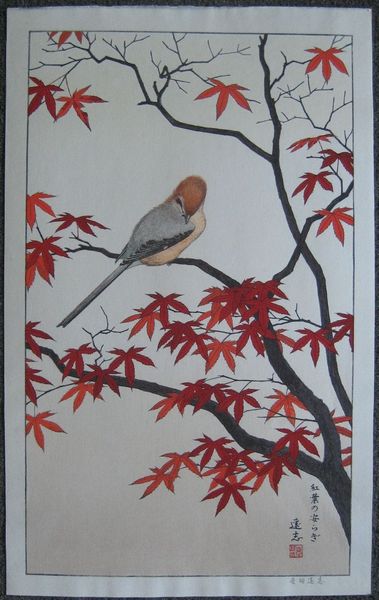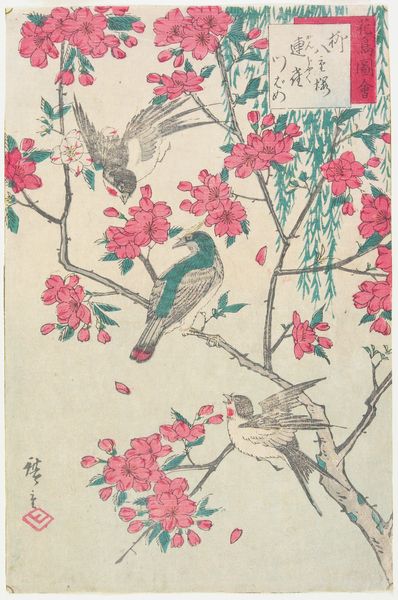
Copyright: Public domain
Editor: This vibrant woodblock print, “Peony and Paddy-birds,” was created in 1926 by Shotei Takahashi. The colors are just so alive – the red of that peony practically jumps off the paper, and the birds are beautifully detailed. It makes me feel like I'm stepping into a peaceful garden. What captures your attention most in this piece? Curator: Oh, that red peony is impossible to ignore, isn’t it? For me, it's all about the composition— the balance between the dynamism of nature and this underlying sense of stillness. Do you see how the artist uses color to guide our eye, almost orchestrating a visual melody? Then you have those cheeky paddy-birds, bringing the garden to life! This is Shotei Takahashi interpreting the tradition of ukiyo-e, updating the ancient stories for the modern world. Editor: The way you describe it as a melody really resonates. It does feel like the colors and elements are in conversation. Ukiyo-e usually feels very rigid, but here I get more impressionist, even naive vibes. Do you see this too, or am I totally off base? Curator: No, no, I think you're spot on! It's that sense of immediacy, that capture of a fleeting moment – the essence of Impressionism distilled into the Japanese print tradition. It invites a new way of observing nature. And isn't it intriguing how he hints at depth with such a shallow picture plane? You almost feel like you could step into the scene, even though everything is flattened! Editor: That’s so true! The flattening effect somehow intensifies the feeling of intimacy. It makes me think about how artists can play with different styles to express something unique, instead of getting trapped by tradition. Curator: Exactly! He takes what came before and then whispers his own secret into it. And now, we are let in on that secret too. Editor: I’ll never look at a flower the same way! Curator: Nor I.
Comments
No comments
Be the first to comment and join the conversation on the ultimate creative platform.
